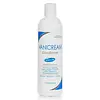What's inside
What's inside
 Key Ingredients
Key Ingredients

No key ingredients
 Benefits
Benefits

 Concerns
Concerns

 Ingredients Side-by-side
Ingredients Side-by-side

Water
Skin ConditioningCetearyl Alcohol
EmollientCetyl Alcohol
EmollientGlycerin
HumectantStearamidopropyl Dimethylamine
EmulsifyingCapryloyl Glycerin/Sebacic Acid Copolymer
Skin ConditioningCetyl Esters
EmollientMacrocystis Pyrifera Extract
Skin ConditioningLaminaria Saccharina Extract
Skin ProtectingChlorella Vulgaris Extract
Skin ConditioningLactobacillus Ferment
Skin ConditioningCocos Nucifera Oil
MaskingHelianthus Annuus Seed Oil
EmollientBehentrimonium Chloride
PreservativeTriheptanoin
Skin ConditioningGuar Hydroxypropyltrimonium Chloride
Skin ConditioningHydrogenated Ethylhexyl Olivate
EmollientButylene Glycol
HumectantHydrogenated Olive Oil Unsaponifiables
EmollientPyridoxine Hcl
Skin ConditioningPanthenol
Skin ConditioningDiheptyl Succinate
EmollientCetrimonium Chloride
AntimicrobialC13-15 Alkane
SolventCitric Acid
BufferingZinc Sulfate
AntimicrobialChlorophyllin-Copper Complex
AntioxidantSodium Hydroxide
BufferingParfum
MaskingLimonene
PerfumingAscorbyl Palmitate
AntioxidantTocopherol
AntioxidantPhenoxyethanol
PreservativeChlorphenesin
AntimicrobialPotassium Sorbate
PreservativeSodium Benzoate
MaskingCI 75120
Cosmetic ColorantWater, Cetearyl Alcohol, Cetyl Alcohol, Glycerin, Stearamidopropyl Dimethylamine, Capryloyl Glycerin/Sebacic Acid Copolymer, Cetyl Esters, Macrocystis Pyrifera Extract, Laminaria Saccharina Extract, Chlorella Vulgaris Extract, Lactobacillus Ferment, Cocos Nucifera Oil, Helianthus Annuus Seed Oil, Behentrimonium Chloride, Triheptanoin, Guar Hydroxypropyltrimonium Chloride, Hydrogenated Ethylhexyl Olivate, Butylene Glycol, Hydrogenated Olive Oil Unsaponifiables, Pyridoxine Hcl, Panthenol, Diheptyl Succinate, Cetrimonium Chloride, C13-15 Alkane, Citric Acid, Zinc Sulfate, Chlorophyllin-Copper Complex, Sodium Hydroxide, Parfum, Limonene, Ascorbyl Palmitate, Tocopherol, Phenoxyethanol, Chlorphenesin, Potassium Sorbate, Sodium Benzoate, CI 75120
Ingredients Explained
These ingredients are found in both products.
Ingredients higher up in an ingredient list are typically present in a larger amount.
Cetearyl alcohol is a mixture of two fatty alcohols: cetyl alcohol and stearyl alcohol. It is mainly used as an emulsifier. Emulsifiers help prevent the separation of oils and products. Due to its composition, it can also be used to thicken a product or help create foam.
Cetearyl alcohol is an emollient. Emollients help soothe and hydrate the skin by trapping moisture.
Studies show Cetearyl alcohol is non-toxic and non-irritating. The FDA allows products labeled "alcohol-free" to have fatty alcohols.
This ingredient is usually derived from plant oils such as palm, vegetable, or coconut oils. There is debate on whether this ingredient will cause acne.
Due to the fatty acid base, this ingredient may not be Malassezia folliculitis safe.
Learn more about Cetearyl AlcoholGlycerin is already naturally found in your skin. It helps moisturize and protect your skin.
A study from 2016 found glycerin to be more effective as a humectant than AHAs and hyaluronic acid.
As a humectant, it helps the skin stay hydrated by pulling moisture to your skin. The low molecular weight of glycerin allows it to pull moisture into the deeper layers of your skin.
Hydrated skin improves your skin barrier; Your skin barrier helps protect against irritants and bacteria.
Glycerin has also been found to have antimicrobial and antiviral properties. Due to these properties, glycerin is often used in wound and burn treatments.
In cosmetics, glycerin is usually derived from plants such as soybean or palm. However, it can also be sourced from animals, such as tallow or animal fat.
This ingredient is organic, colorless, odorless, and non-toxic.
Glycerin is the name for this ingredient in American English. British English uses Glycerol/Glycerine.
Learn more about GlycerinPanthenol is a common ingredient that helps hydrate and soothe the skin. It is found naturally in our skin and hair.
There are two forms of panthenol: D and L.
D-panthenol is also known as dexpanthenol. Most cosmetics use dexpanthenol or a mixture of D and L-panthenol.
Panthenol is famous due to its ability to go deeper into the skin's layers. Using this ingredient has numerous pros (and no cons):
Like hyaluronic acid, panthenol is a humectant. Humectants are able to bind and hold large amounts of water to keep skin hydrated.
This ingredient works well for wound healing. It works by increasing tissue in the wound and helps close open wounds.
Once oxidized, panthenol converts to pantothenic acid. Panthothenic acid is found in all living cells.
This ingredient is also referred to as pro-vitamin B5.
Learn more about PanthenolWater. It's the most common cosmetic ingredient of all. You'll usually see it at the top of ingredient lists, meaning that it makes up the largest part of the product.
So why is it so popular? Water most often acts as a solvent - this means that it helps dissolve other ingredients into the formulation.
You'll also recognize water as that liquid we all need to stay alive. If you see this, drink a glass of water. Stay hydrated!
Learn more about Water